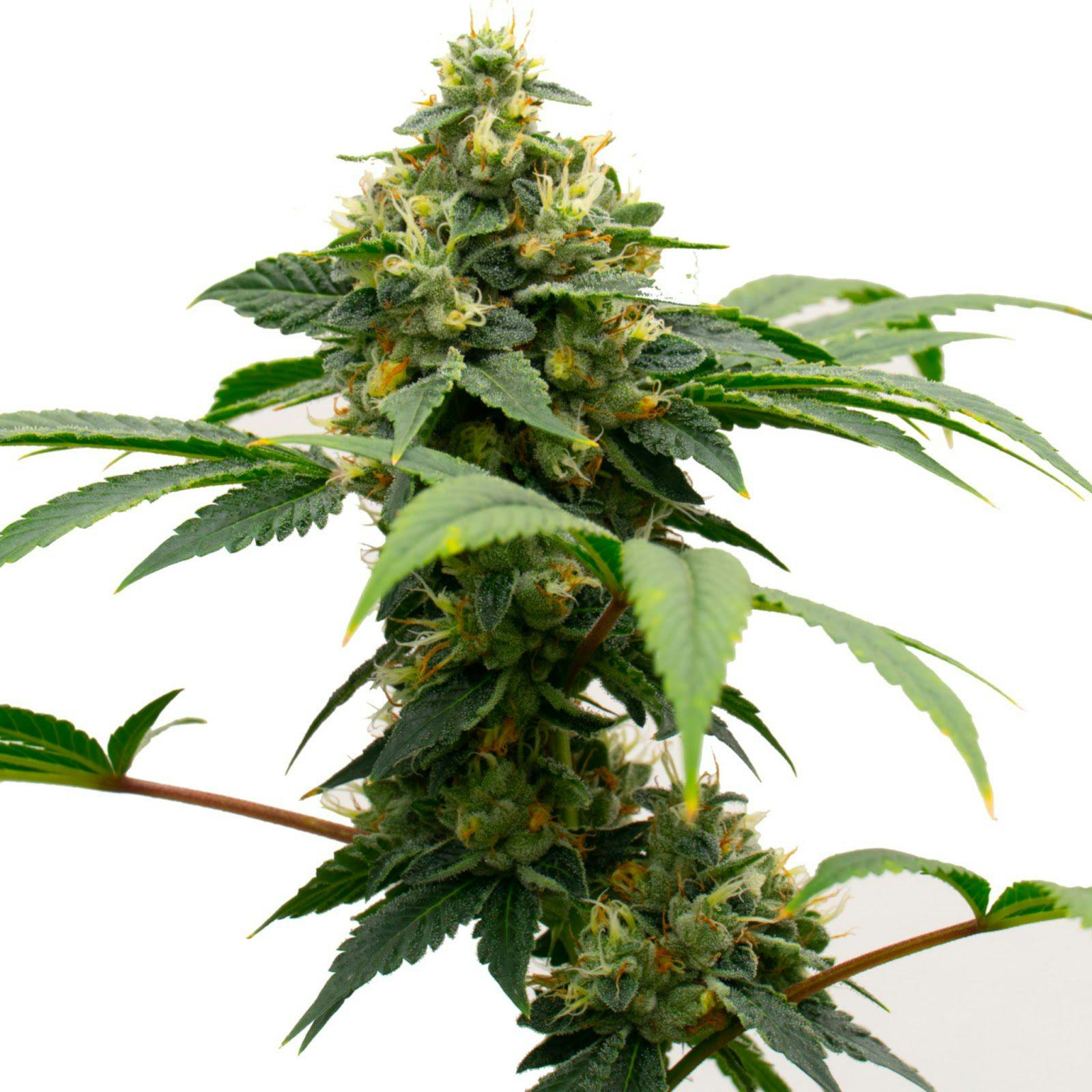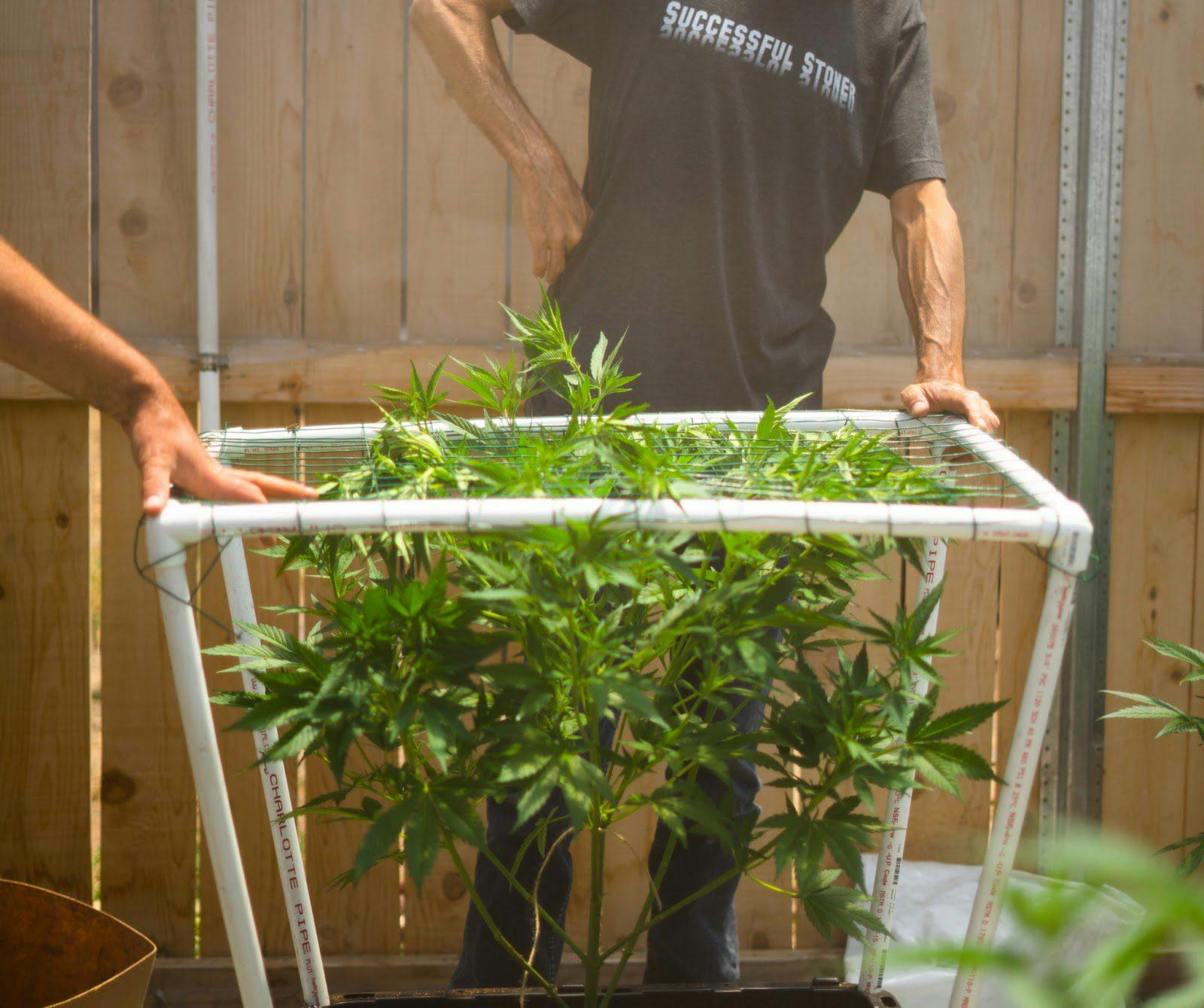What’s the Best Temperature for the Flowering Stage When Growing Outdoors?

Article written by

Homegrown Cannabis Co.American Seed Bank and Cultivation Experts
Content reviewed by

Dr. Lewis JasseyMedical Director - Pediatric Medicine
The best temperature for the flowering stage outdoors is 70-80°F, and maintaining it ensures abundant harvests of high-quality buds.
Slight fluctuations are acceptable, but extremes aren’t. Cannabis suffers considerable stress when temperatures are outside the optimal range for too long. As a result, its flowers are thin and airy instead of thick and resinous (which you get if you keep heat in check).
Get your medical marijuana card
Connect with a licensed physician online in minutes.
Ideal Outdoor Temperature for the Flowering Stage
In nature, season changes usher in different stages of plant growth. Flowering starts when there are 12 hours of darkness in late summer and ends before the first fall frost. As a result, weed has evolved to expect moderate heat as it produces and fattens buds.
The best temperature for blooming marijuana plants is 75°F (more broadly, 70-80°F). Sativa strains (cultivars) typically enjoy higher temperatures, while indica prefers things slightly cooler. Anything between 65°F and 85°F is acceptable.
What happens if your growing environment is considerably below this range?
Slightly colder conditions are less problematic than hot ones. In fact, cooler temperatures in late blooming increase trichome production. The plant gets extra sticky to protect its flowers from the external environment, and you get flavorful and potent weed.
Your garden isn’t completely safe from the chill, though. Overly cool air makes the flowers too light and loose. If the humidity levels in your grow area are high, low temps could also cause bud rot and powdery mildew.
As a rule, never let the daytime temperature fall under 65°F. If growing a colorful strain like Purple Kush, dark period temps around 55°F in late flowering bring out the violet hue.
What about the opposite extreme?
Extremely high temperatures may cause the leaves to lose water, go yellow, wilt, and curl upward. Stunted growth and misshapen buds (known as fox-tailing) are also common symptoms of heat stress. Marijuana absorbs more water through the roots when moisture levels are low. It may also experience nutrient burn.
Additional heat-related troubles arrive in late flowering. Temps over 90°F dry out and burn away the terpenes, reducing weed flavor and potency.
Outdoor growing leaves you with fewer ways to regulate the environment, but you’re not powerless. Let’s see what you can do to get the best results when cultivating outside.

How to Protect Cannabis from Cold Temperatures
External temperatures drop as flowering picks up steam. Your yields are in danger if the fall arrives too soon or there’s a surprise cold spell in late August.
Does this mean you must harvest early or kiss your gardening ambitions goodbye? Not at all. Here are several neat tricks you can implement to shelter your flowering cannabis from cold weather:
- Use compost as a heat source. Dig a trench between plant rows and fill it with organic matter. It accumulates warmth when exposed to sunlight and gradually releases it later.
- Place warm water bottles in pots. Fill several dark-colored glass or metal bottles with water and let them soak in the sun. Place them next to plants to warm them up.
- Install environmental protections. Rain and harsh wind cause physical stress and mold issues. Erect bamboo branches around your garden and cover them with a cloth to keep these problems at bay.
- Consider a greenhouse. If the temperatures in your area are consistently low, a sheltered structure can let you keep growing outdoors. Heating devices are effective in greenhouses, keeping your garden cozy.
You might also supply warmer water to plants (but not over 75°F). This solution only works in the short term but can help your garden withstand a day or two of cold temperatures.
Remember that relative humidity often rises as temperatures drop, creating a breeding ground for mold, fungi, and bud rot. If your forecast predicts excessive air moisture, prune your plants and watch out for overwatering.
How to Protect Cannabis from Hot Temperatures
Hot temperatures are inevitable throughout the growing season. In America, spells of scorching weather sometimes continue even in late September and early October.
How do you handle an inhospitable grow space without the convenience of air conditioners? Help your plants withstand the heatwave with the following tricks:
- Time your watering right. Water droplets can magnify sunlight and further increase heat on plant tissue. Instead of showering plants at noon, do so at sunrise or sundown.
- Space out your marijuana. Hot air is problematic, and the trouble doubles when it’s stagnant. Move plants away from one another to let the breeze penetrate the canopy.
- Use larger pots. Small spaces make roots choke, especially when it’s hot out. Move your plants to more spacious containers to let them breathe.
- Provide supplements to combat stress symptoms. This solution won’t drive down temperatures, but it might increase the plant’s ability to withstand them. Seaweed and silica supplements are effective against the drying and wilting that happens in high heat.
Expert tip: Consider coco coir for growing operations in hot and humid climates. This medium has root-soothing properties and could protect cannabis from stress.
Your plants might become less capable of accessing water vapor from the atmosphere as the heat rises. Increase the watering frequency and mist the foliage to stop your plants from drying and dying due to low humidity.
Download Free Guide to Plant Nutrients
The Bottom Line
The optimal temperature is among the integral aspects of successfully growing cannabis. Stay on top of this metric to bypass plant health issues and get heaps of sticky buds at harvest time.
Use a thermometer (or regularly check the forecast) to catch any dangerous fluctuations early. Employ our tips to protect marijuana from weather extremes. Proactively respond to cold and heat stress symptoms to keep your garden happy and high-yielding.
Now that you have the theory, why not put it into practice? Buy the highest-quality seeds and launch a cultivation journey at home.
Get Your Medical Card
Connect with a licensed physician online in minutes.
Frequently Asked Questions
What’s the best temperature for the seedling stage?
Seedlings enjoy moderately warm air, high humidity, and a gentle breeze. They fare best at 68-77°F and require consistent conditions to grow. Your baby plant will stop developing at low temperatures. It might wilt and die if the space gets scorching.
What temperature should my grow room be when the lights are off?
Vegetative and flowering stage plants enjoy slightly cooler conditions during lights-off hours. It’s best to keep nighttime grow room temperatures at 65-75°F. If trying to bring out the purple pigment (anthocyanins) in a strain, you may lower it to 55°F, but only in the final two weeks of blooming.
What should the temperature be during the vegetative stage?
Cannabis plants in the vegetative stage flourish under 70-85°F (65-75°F at nighttime) with moderate humidity. Overly high temperatures cause heat stress, while cold air hinders growth and makes them susceptible to mold and mildew.
